F-35: Controversial, Capable, or Both?
May 6th, 2023
9 minute read
No other military platform in modern history has been as controversial as the Lockheed Martin F-35 Lightning II (named so in honor of Lockheed’s P-38 Lightning of World War II fame) — which also has the distinction of being the most expensive U.S. military program ever, with an estimated total cost of $1.5 trillion. That has given its critics plenty of ammunition that say it’s unaffordable, while even supporters of the program admit that the Pentagon can’t afford to lose any in a war!
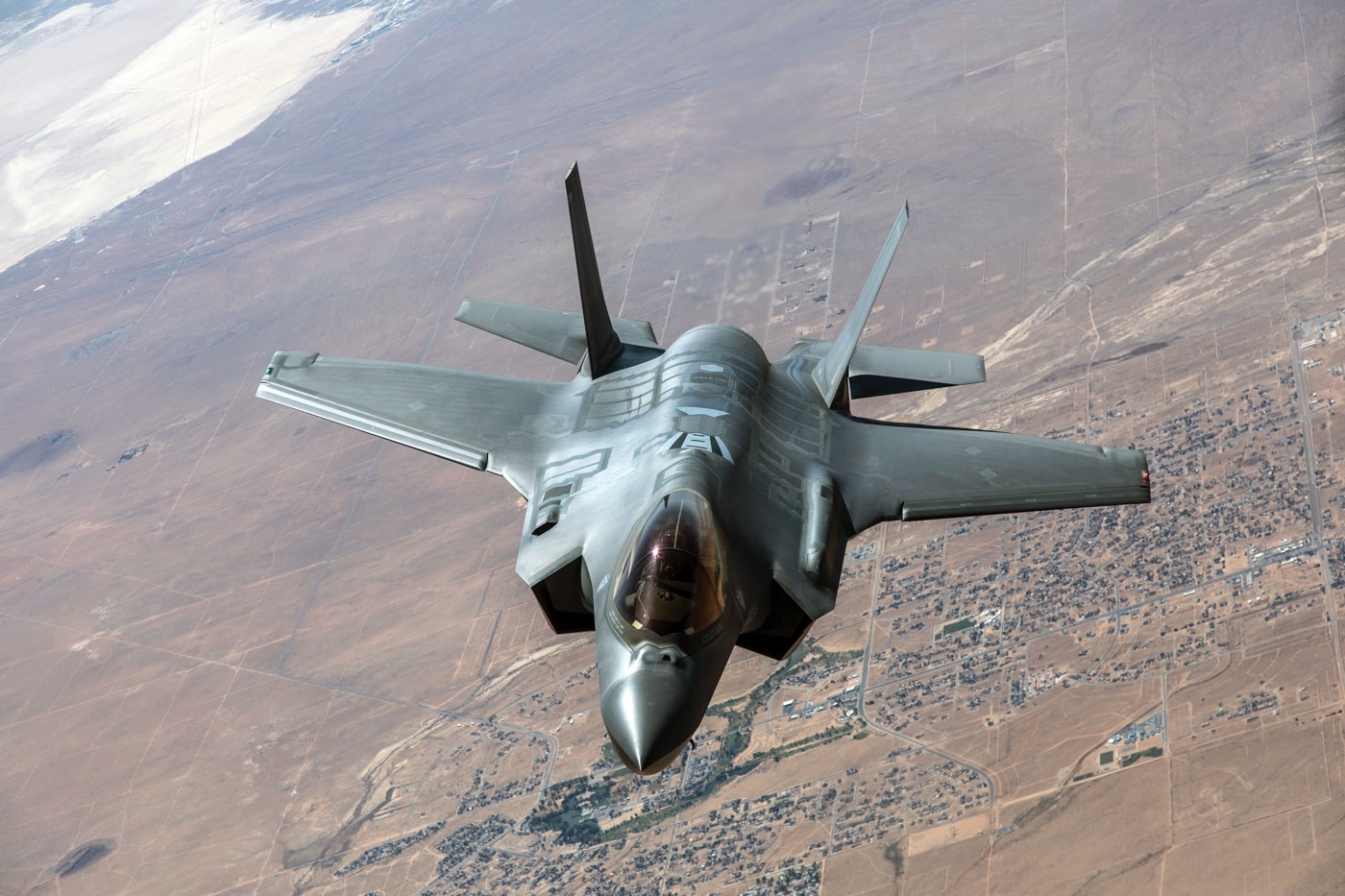
Of course, some context is required.
That figure of $1.5 trillion is actually for the life of the F-35 Joint Strike Fighter, which is slated to remain in service until at least the 2070s, and possibly longer. Though it may not have the longevity of the Cold War-era B-52 Stratofortress, where the final aircraft could be in service for upwards of a century, the Lightning II will likely serve as the premier multi-role combat aircraft for the U.S. military and its partners for decades to come.
Another consideration is also that the figure includes the cost for every tactical fighter jet already built and in service, along with those to be built, as well as the operational costs for the U.S. fleet of F-35s.
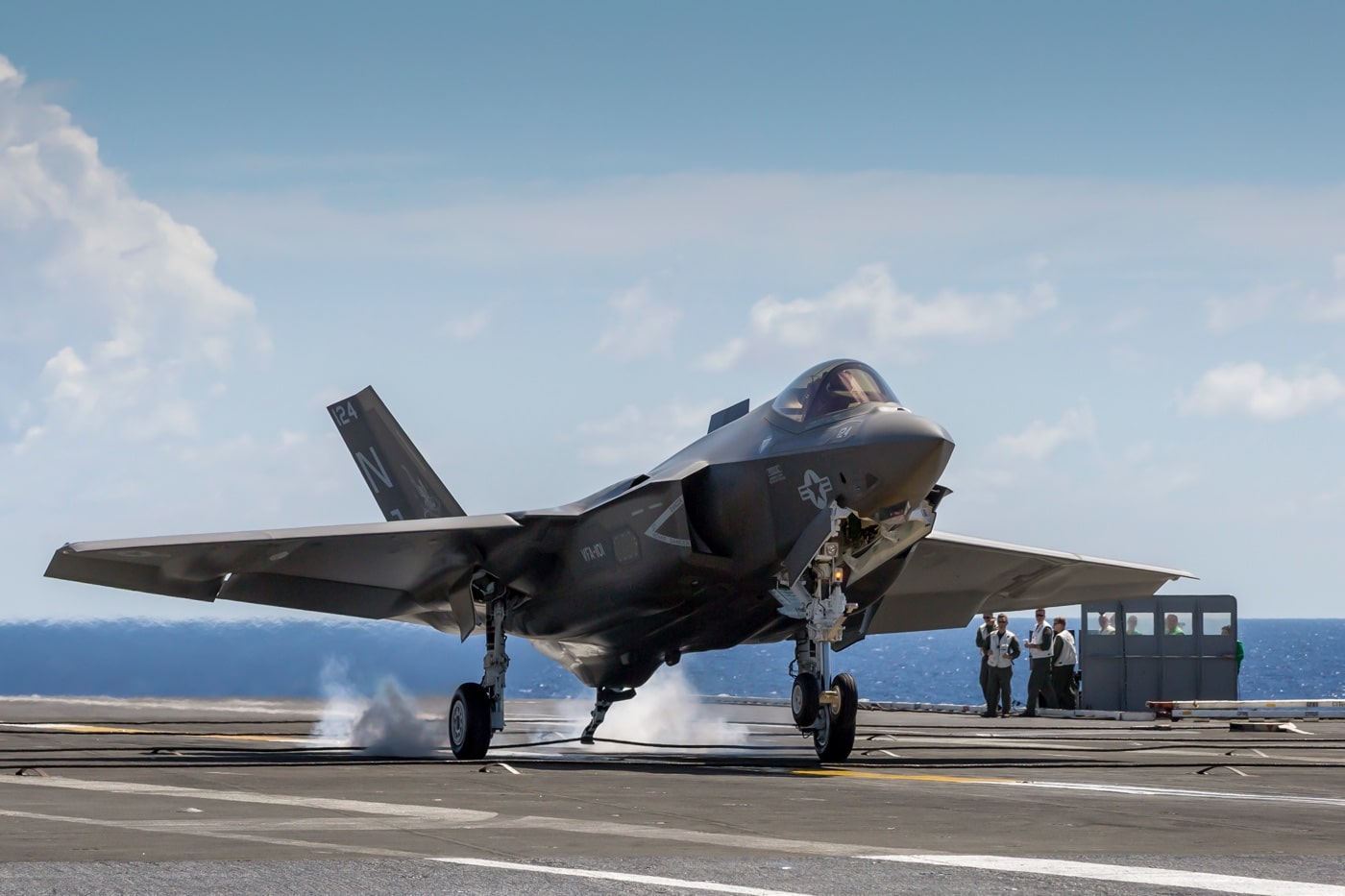
That latter fact is also one that has some penny-pinchers in Washington concerned, however. Simply put, flying modern military fighters doesn’t come cheap, and the F-35 has a current estimated cost per flying hour of $33,600. So, for every hour spent in the sky, the costs are equal to a brand-new car!
Efforts have been made to reduce those costs down to $25,000 by 2025, but there is still much room for improvement. Here again, context is needed. The flying time is based on the need to replace key parts, regular maintenance, and even the number of ground crew involved in readying and then servicing the aircraft.
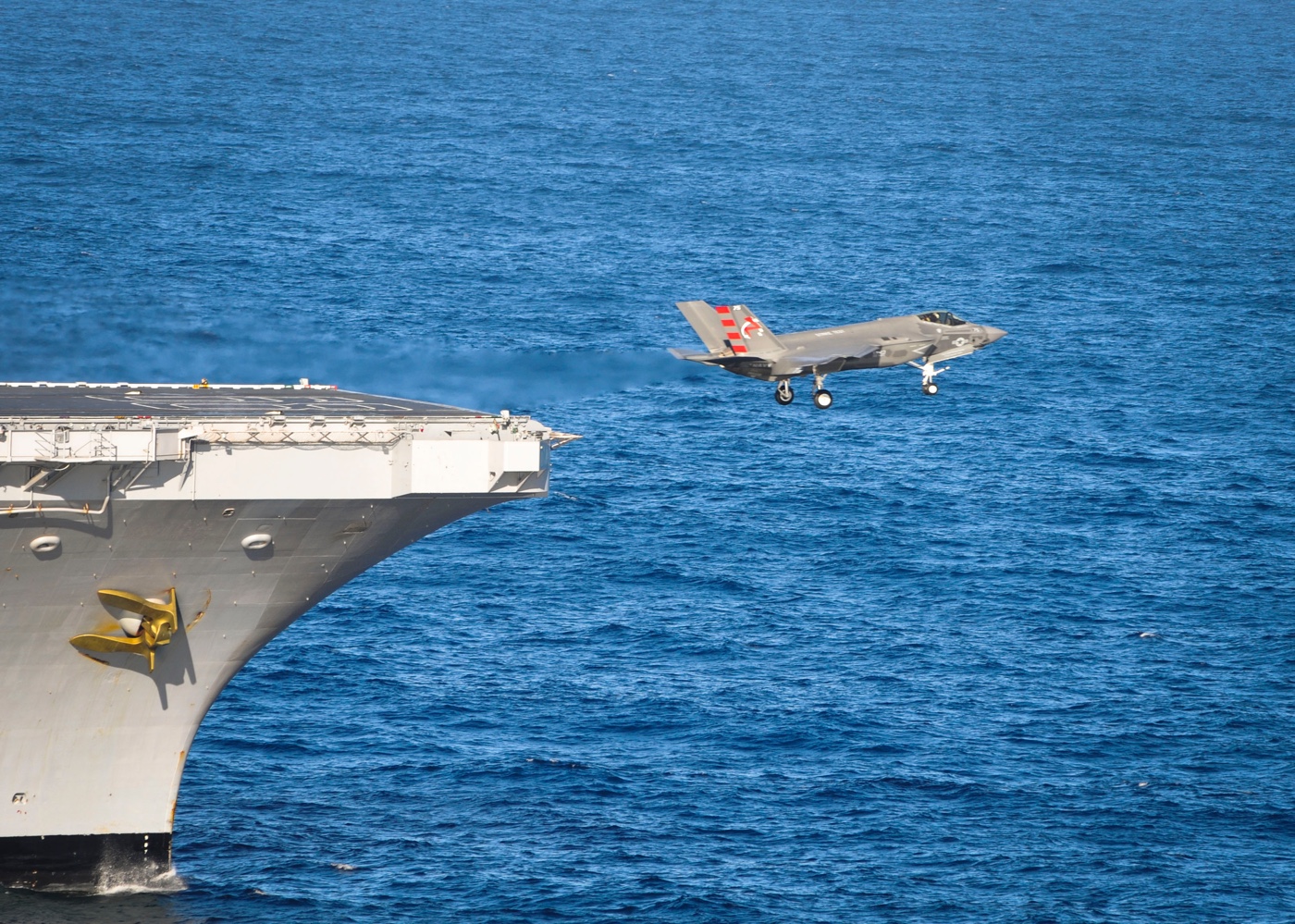
It should be noted too that the proven F-16 Fighting Falcon costs around $22,000 per hour to operate, and it can’t do a lot of the things that the F-35 fighter can. More importantly, the E-4B — the highly-modified 747 that serves as the National Airborne Operations Center, and is the military’s Pentagon in the sky in the event of a national emergency — costs upwards of $400,000 per flying hour!
The F-35 isn’t exactly a bargain, but it is far from the most expensive aircraft to operate.
More Bang for the Buck?
The F-35 could actually be seen as a remarkable and ambitious combat program; one that set out to develop an aircraft that could combine stealth, sensor fusion and network-enabled operations into a single airframe. The Joint Strike Fighter program was also meant to fill the role of four different front-line aircraft employed by the United States Air Force, United States Navy and United States Marine Corps, as well as a variety of fighters for at least a dozen other partner nations.
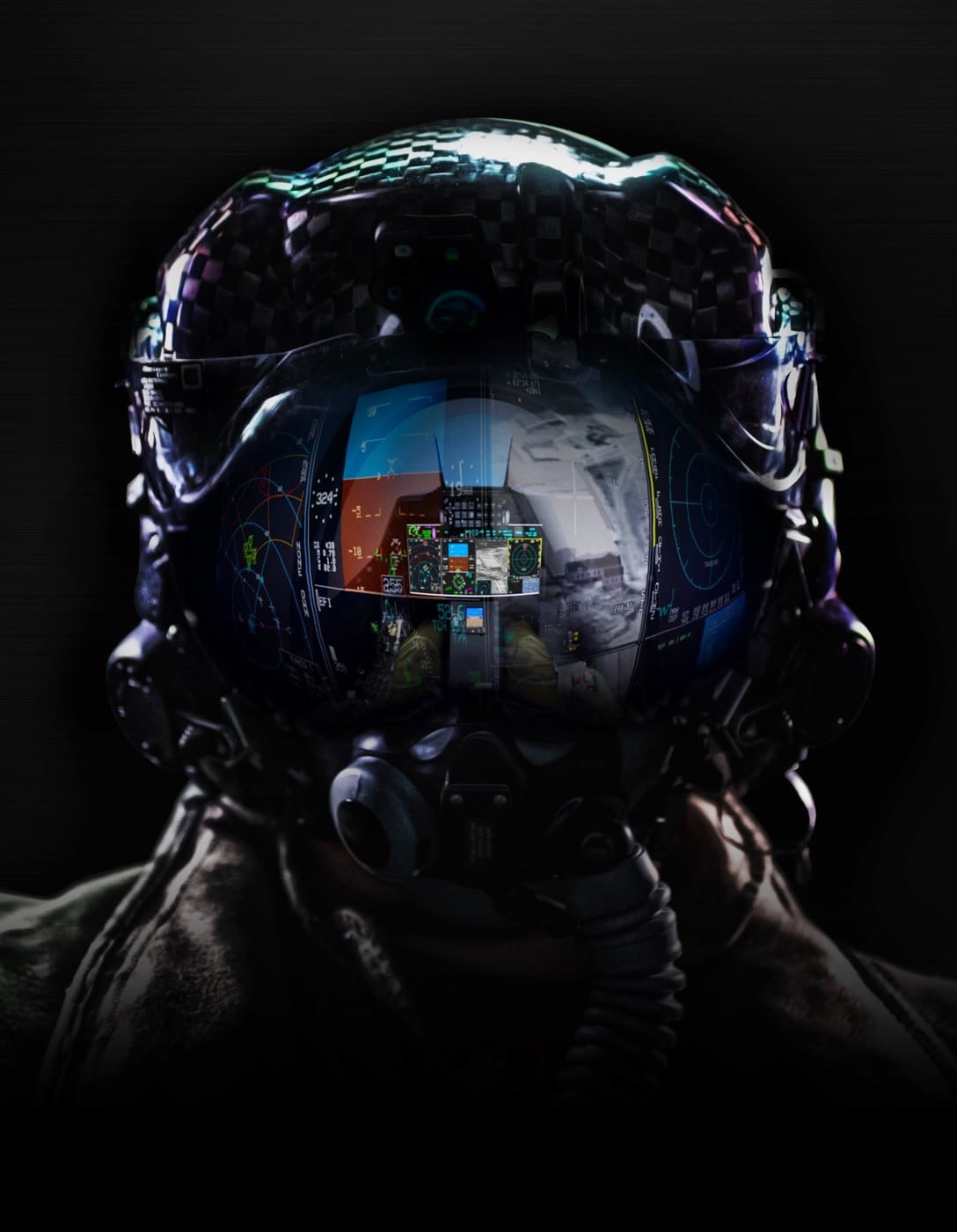
The F-35 is designed to fill the role of the aforementioned F-16, but also the Air Force’s A-10 Thunderbolt II (Warthog), the U.S. Navy’s F/A-18 Hornet, and the U.S. Marine Corps’ AV-8B Harrier II. The F-35 Lightning II was able to fill all these roles this because it wasn’t devised as a single aircraft but rather three variations.
It was further developed to be a more cost effective than the F-22 Raptor, which was designed primarily as an air superiority fighter even as the U.S. then had no near-peer adversaries to confront. (To read about possible peer or near-peer competitors for the F-22 today, check out our articles about the Chinese J-20 and the Russian SU-57.) That fact explains why to date the F-22 has only been used in its secondary role of ground attack fighter. The F-35 by comparison can do it all it, and cheaper than the Raptor.
Along with Boeing, defense and aerospace giant Lockheed Martin was selected to participate in the Joint Strike Fighter (JSF) concept demonstration phase in 1997. Boeing devised its X-32, while Lockheed Martin offered the X-35. In the end, the latter option won out in October 2001. As the winning company, Lockheed Martin then joined forces with Northrop Grumman and BAE Systems in the production phase. And so was born the fifth-generation fighter that would become the most advanced, albeit also most expensive, multi-role combat aircraft in service in the world today.
The F-35A
The first production example was the conventional take-off and landing (CTOL) F-35A, which was completed at the aerospace firm’s facility in Forth Worth, Texas, in February 2006. Later that same year, the F-35 was officially designated the Lighting II.
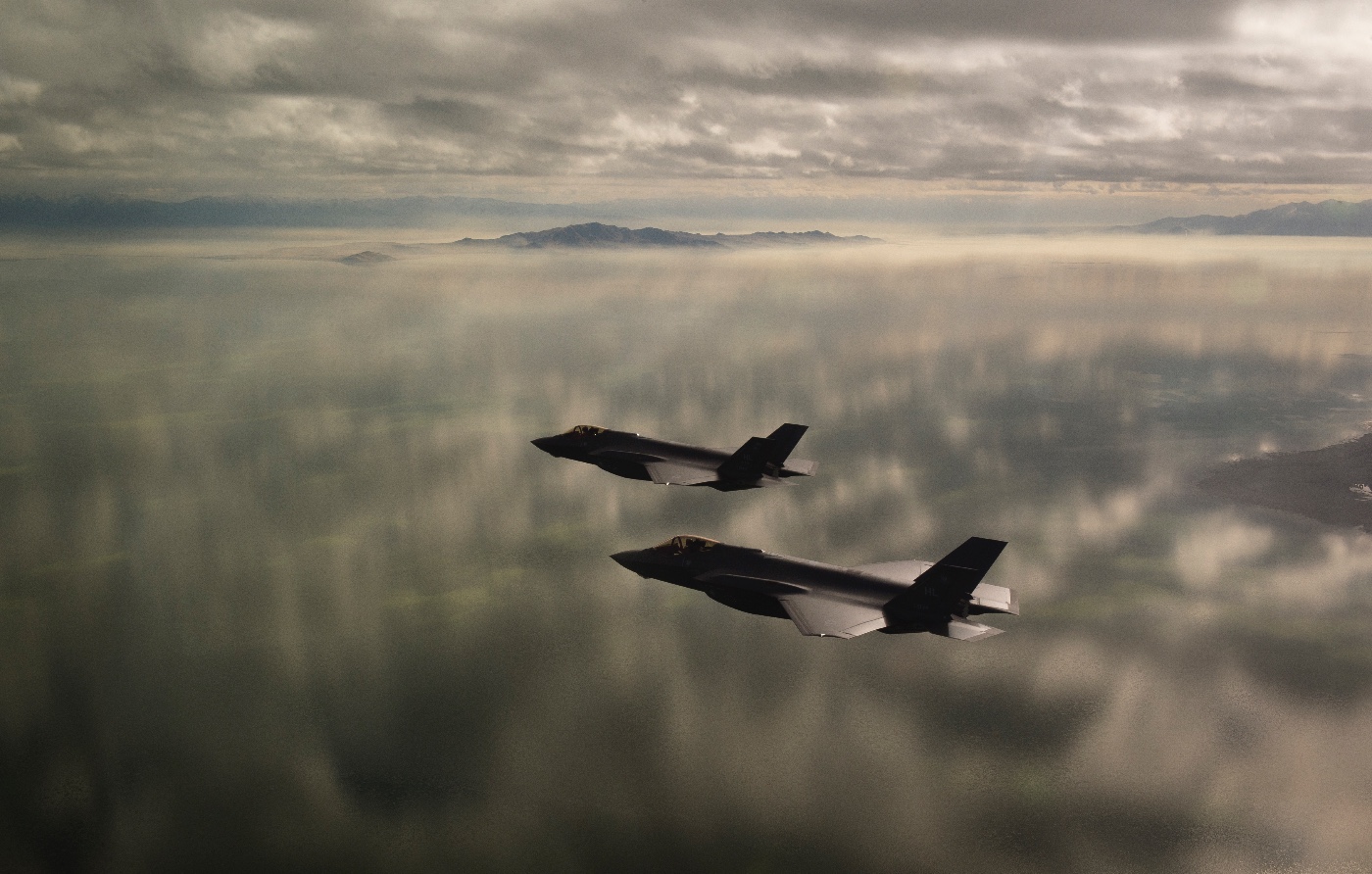
As the United States Air Force has noted, the F-35 was selected to replace the service’s aging fleet of F-16s and A-10s. It is an agile, versatile, high-performance, 9g-capable multi-role fighter. Its electronic sensors include the Electro-Optical Distributed Aperture System (DAS), which provides pilots with situational awareness in a sphere around the aircraft for enhanced missile warning, aircraft warning, and day/night pilot vision. Moreover, the F-35A is equipped with the internally mounted Electro-Optical Targeting System (EOTS) that can provide extended-range detection and precision targeting against ground targets, plus long-range detection of air-to-air threats.
The F-35A’s Pratt & Whitney F135-PW-100 engine produces 43,000 lbs of thrust, and it consists of a three-stage fan, a six-stage compressor, an annular combustor, a single-stage high-pressure turbine, and a two-stage low-pressure turbine. The fighter is capable of reaching Mach 1.6 and has a range of more than 1,350 miles with internal fuel.
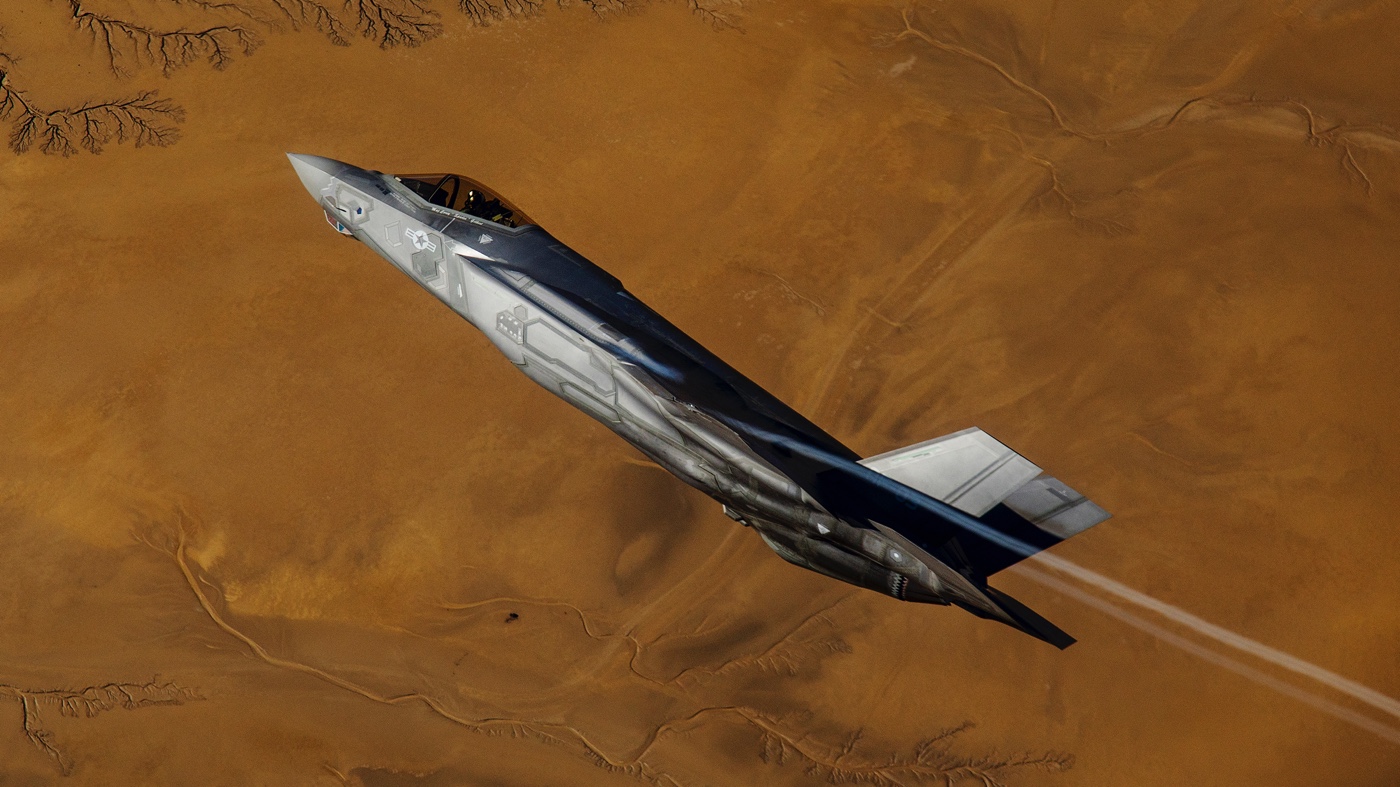
In addition to service with the United States Air Force, the F-35A has been adopted by more than a dozen nations, including Australia, Belgium, Canada, Denmark, Finland, Germany, Italy, Japan, the Netherlands, Norway, Poland, South Korea and Switzerland. Current plans call for more than 800 of the aircraft to be delivered worldwide by the end of the decade.
The F-35B
Four years after the arrival of the first F-35A, in March 2010, the F-35B variant took part in a first-of-its-kind flight from the remote Naval Air Station in Patuxent River, Maryland. This aircraft accomplished what no other plane (fighter or otherwise) had ever done. It successfully accelerated past the speed of sound in flight and then made a vertical landing on the smallest landing footprints for any combat aircraft.
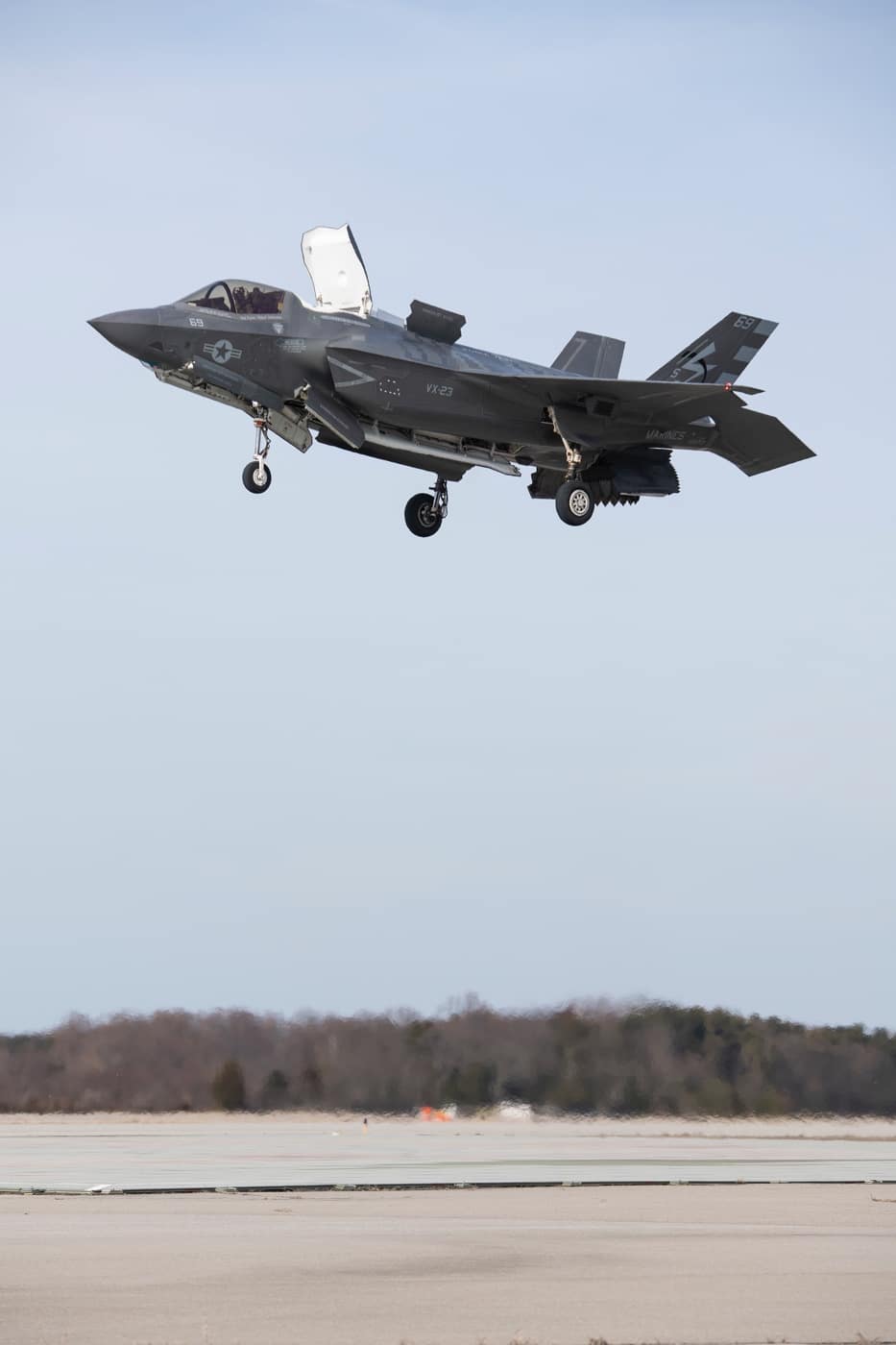
Designed to replace the Harrier, the unique VTOL fighter employed by the U.S. Marine Corps, the F-35B is the short take-off and vertical landing (STOVL) variant that offers both vertical landing and long-range supersonic speed in a single aircraft. Unlike the F-35A, this variant is equipped with a patented shaft-driven Rolls-Royce LiftFan propulsion system. Though it carries fewer weapons and has reduced fuel capacity and range, it can operate from light aircraft carriers and amphibious assault ships.
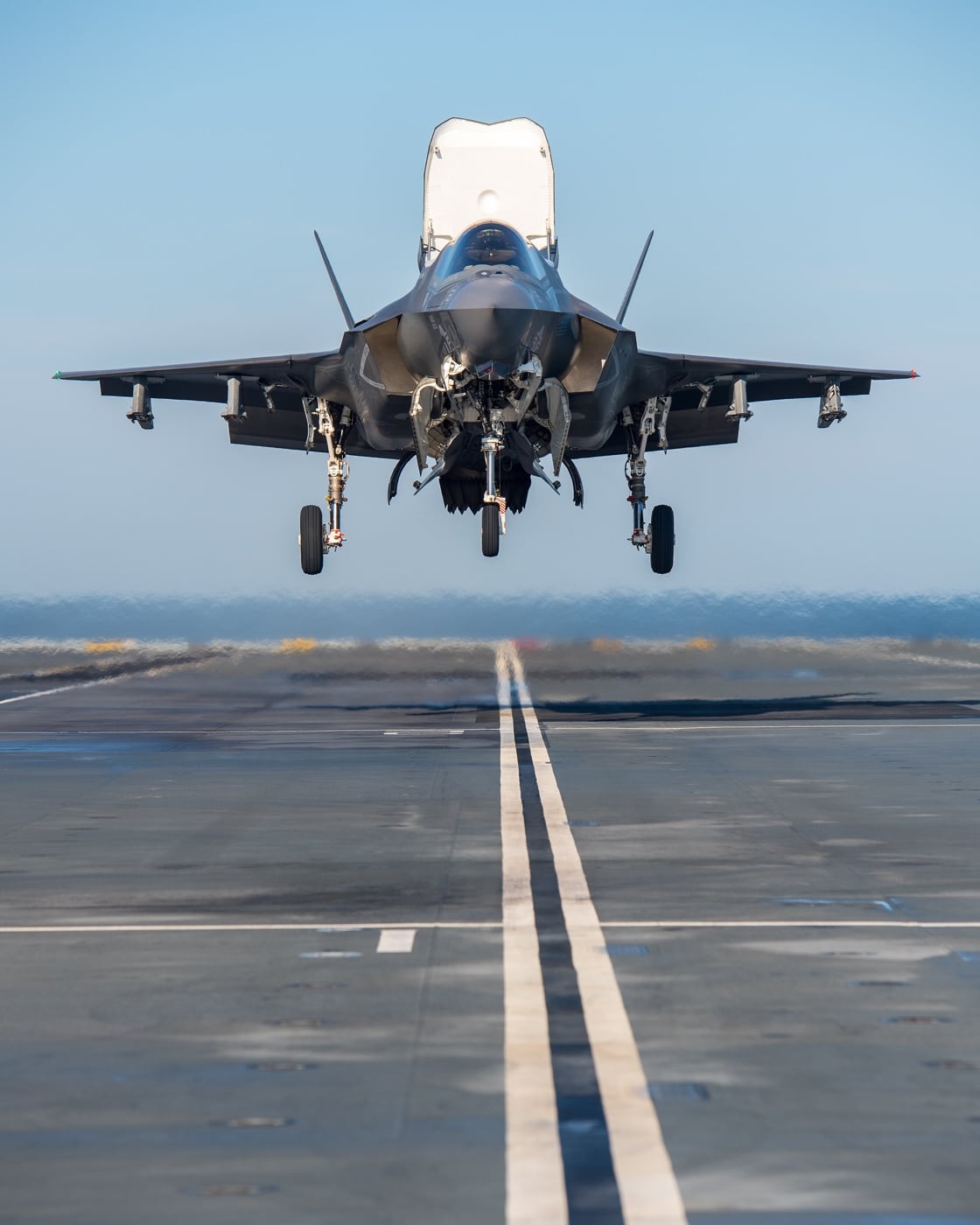
It is currently operated by the United States Marine Corps, the UK’s Royal Air Force, and the Italian Navy — while the militaries of Japan, Singapore, and South Korea have the STOVL aircraft on order. Of the F-35 partner nations, the UK was the first to receive its aircraft in July 2012, while it is being adopted by other countries for its use on aircraft carriers. Japan has even updated its constitution to allow for the conversion of its helicopter carriers to light aircraft carriers that will operate with the F-35B to serve as a deterrent to China and North Korea.
The F-35C
The United States Navy has already adopted the F-35C, the carrier-based variant (CV) of the Lightning II. It will eventually replace the F/A-18 Hornet. This model features larger wings and a strengthened undercarriage to help it cope with the stresses of catapult launches and arrested landings. In addition, the CV model features folding wingtips, as well as the greatest internal fuel capacity of the Joint Strike Fighters.
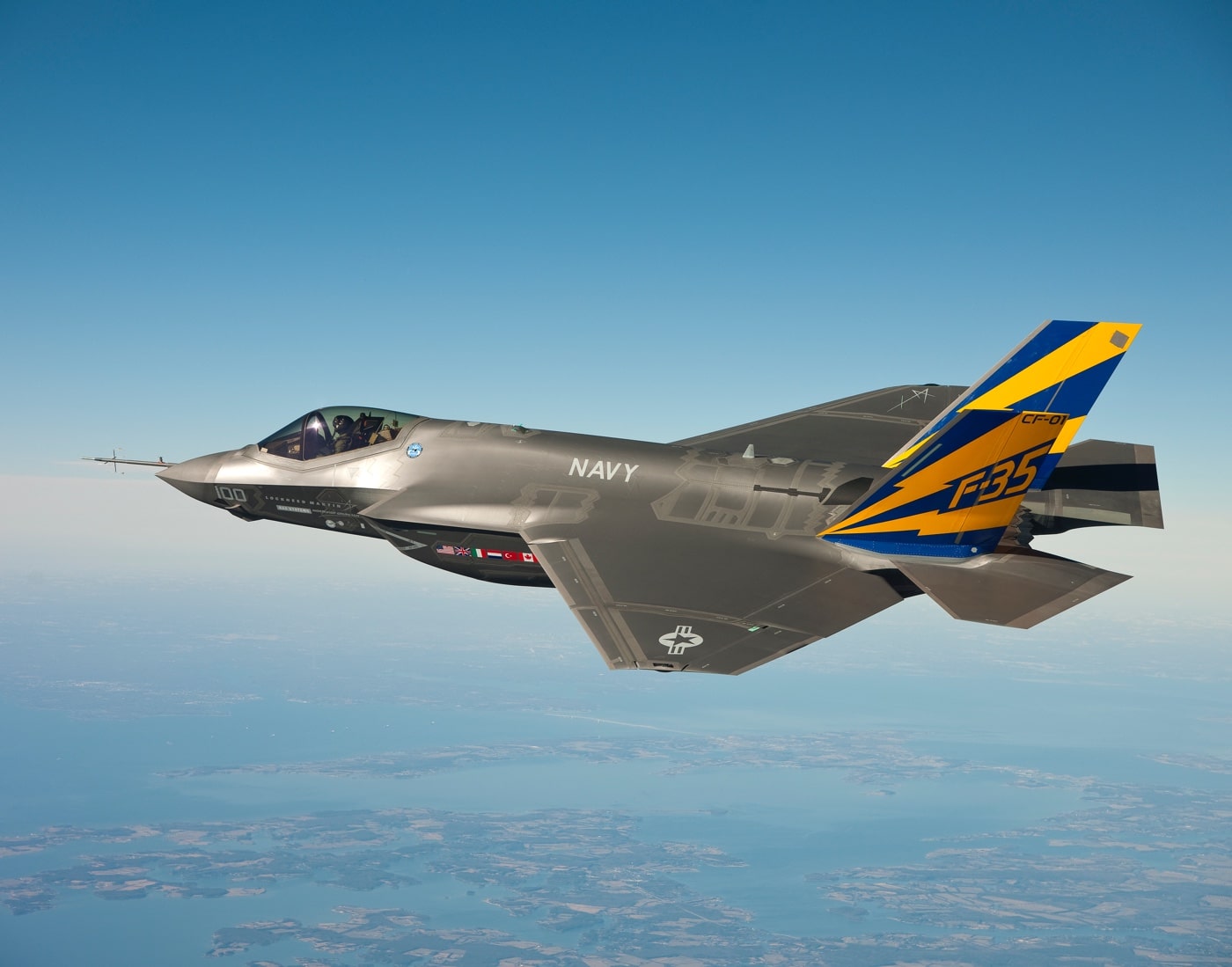
Currently, the United States Navy and United States Marine Corps are the only operators of the F-35C. As noted, other foreign naval services now utilize the F-35B instead.
F-35I “Adir”
One other variant of the F-35 isn’t actually operated by the United States. Rather it is the F-35I “Adir” (meaning “Mighty One” in Hebrew), a variant built especially for Israel that features a domestically produced electronic warfare system (EWS).
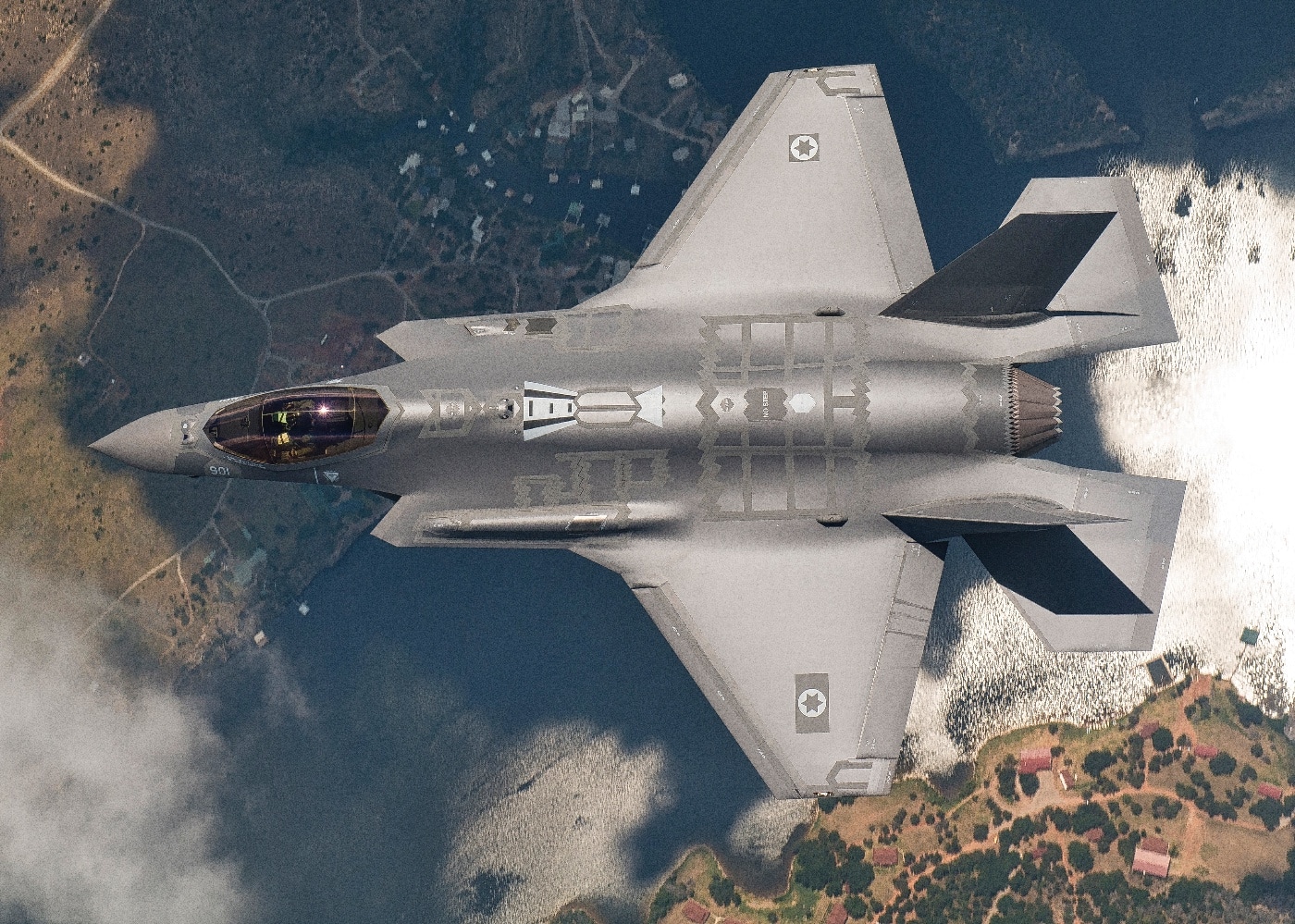
Designed to ensure that the Israeli Air Force’s (IAF) F-35s will retain their edge over other aircraft throughout the service life of the airframes, this adds advanced sensors and countermeasures. In addition, IAF pilots are equipped with a locally developed helmet-mounted display that utilizes datalink functionality specific to the Israel Defense Forces (IDF).
Two IAF squadrons are now equipped with the aircraft, including the 116th Lions of the South Squadron and the 140th Golden Eagle Squadron based at Nevatim Airbase.
Shared Capabilities
At the heart of the Lightning II’s capabilities are its various mission systems that include electronic sensors, displays, and communication systems that collect and share data with the pilot as well as other friendly aircraft. Individual components in the F-35 include the AN/APG-81 active electronically scanned array (AESA) radar, and the AN/AAQ37 Distributed Aperture System (DAS) that can provide 360-degree situational awareness. In addition, the Electro-Optical Targeting System (EOTS) combines forward-looking infrared (FLIR) and infrared search and track (IRST) functions, while a special $400,000 pilot helmet provides a Helmet-Mounted Display System and communications. The AN/APG-81 can also be capable of stand-off jamming for other aircraft.
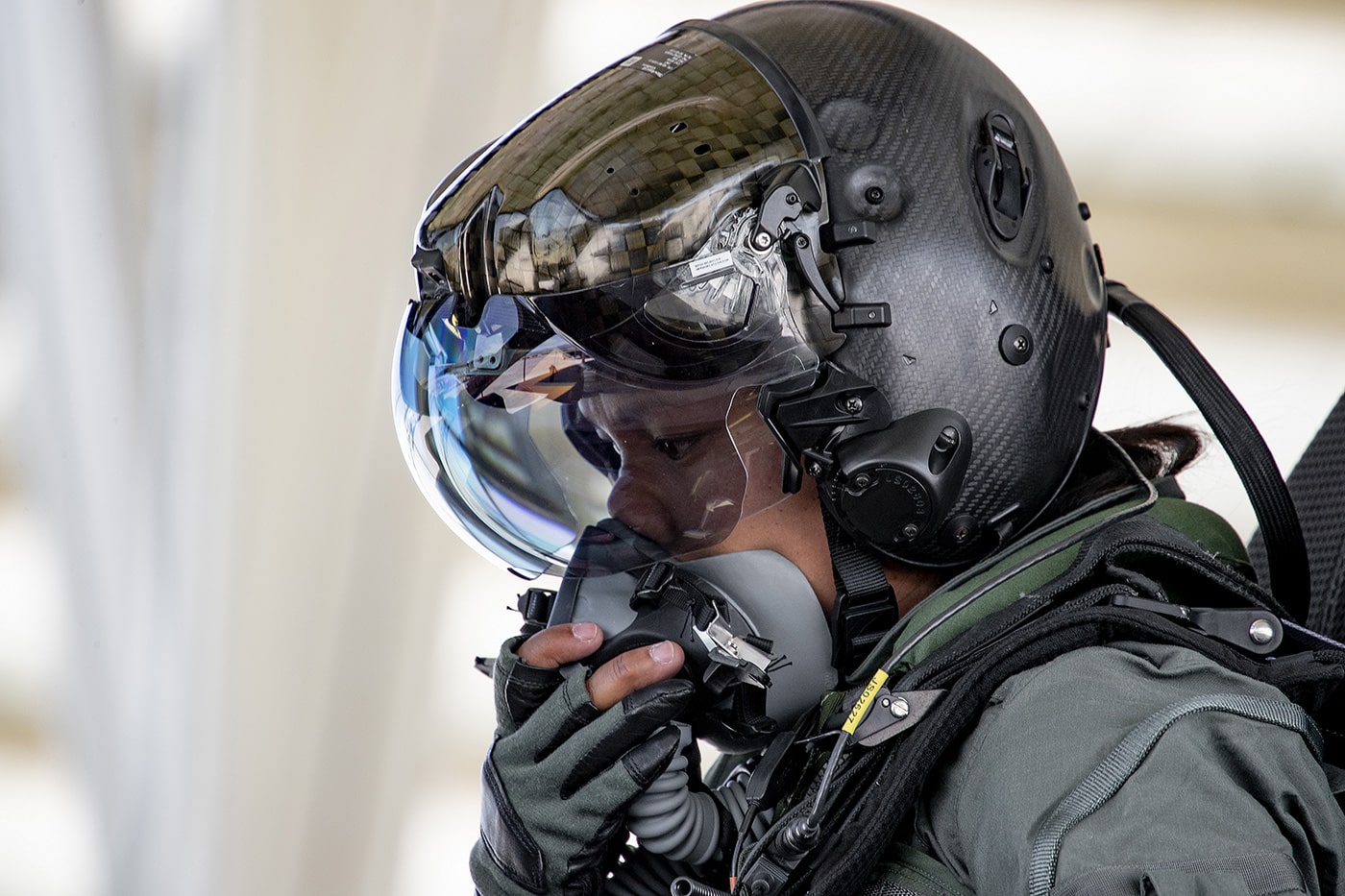
Data from the various sensors is brought together under the sensor fusion concept, which provides the pilot with a single integrated picture of the battlefield — and all of that information can be shared with other pilots and other assets via datalinks, including the Multifunction Advanced Datalink (MADL). The F-35 could eventually be updated to be supported by “loyal wingman” autonomous drones.
Unleash the Beast
As a fifth-generation multirole fighter aircraft, the F-35 utilizes advanced stealth features that include an integrated airframe design as well as the use of advanced materials, while weapons can be carried internally. The internal weapons bay helps the aircraft maintain its stealth capabilities. This could allow a Lightning II to strike an adversary during the so-called “first day of war” where it uses its low observability to bypass air defenses. It can carry approximately 5,700 pounds in the weapons bay.
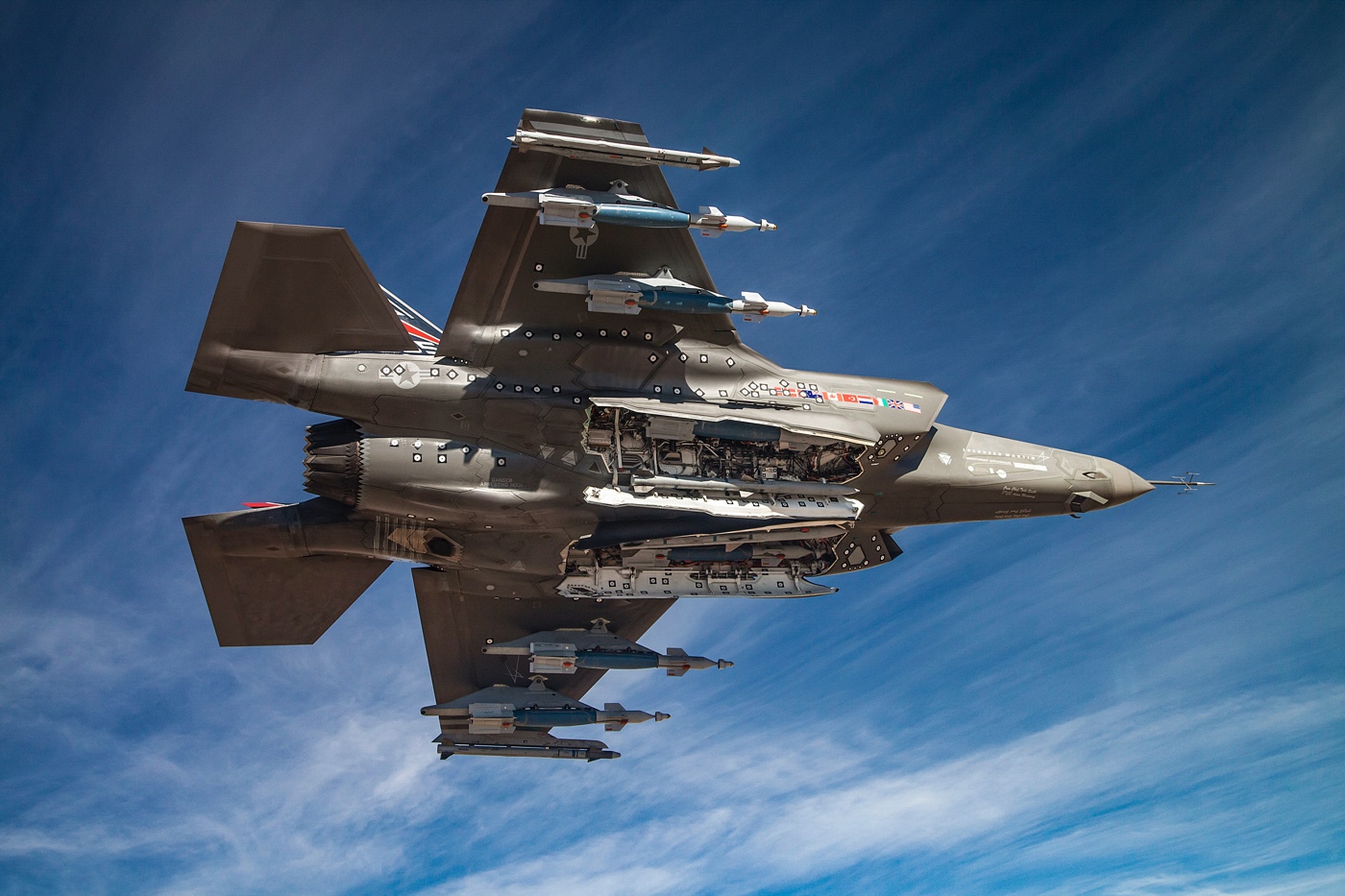
Then, when an enemy’s radar and missiles are destroyed and air dominance is established, the F-35 Lightning II can convert to its “beast mode,” capable of carrying up to 22,000 pounds of combined internal and external weapons.
Conclusion
Yes, the F-35 is expensive. It was also developed at a time when the United States was focused on the Global War on Terror (GWOT), but its critics should also see that it is ideally suited to addressing threats from near-peer adversaries including China and Russia.
Moreover, I believe the F-35 has largely proven it’s the right aircraft for now and for decades to come. And with so many allies and partners operating it (or planning to do so), this will ensure greater compatibility with America’s allies in a time of war. Yet, it is important to stress that it remains a system that could help maintain the peace simply because no foe will ever want to take one on. Let’s certainly hope that is the case.
Editor’s Note: Please be sure to check out The Armory Life Forum, where you can comment about our daily articles, as well as just talk guns and gear. Click the “Go To Forum Thread” link below to jump in!
Join the Discussion
Continue Reading
Did you enjoy this article?

 78
78






